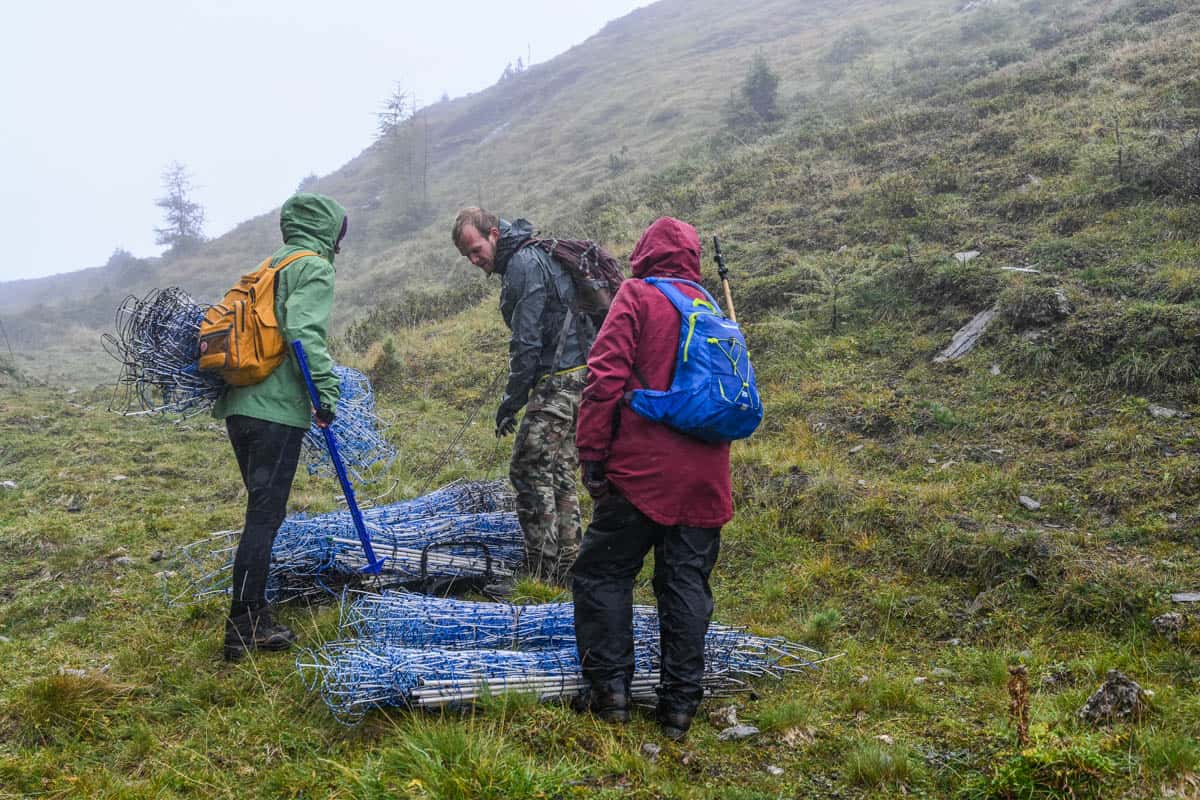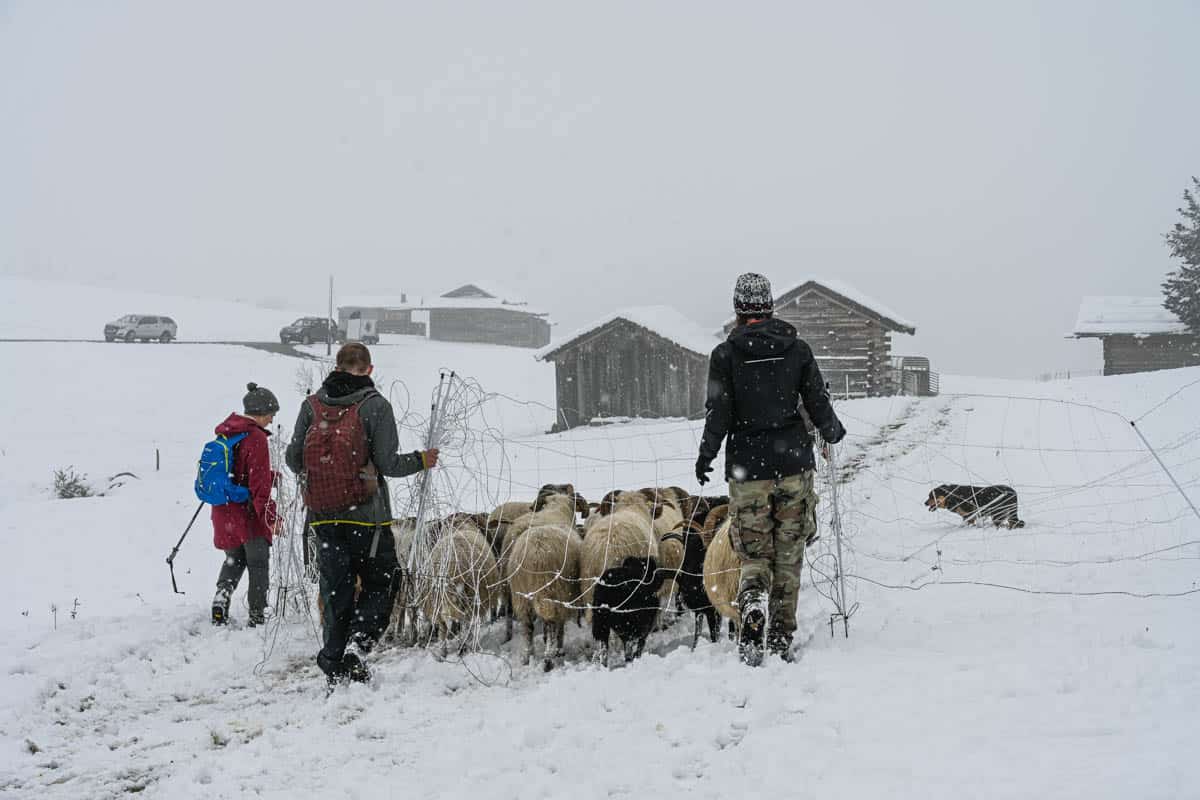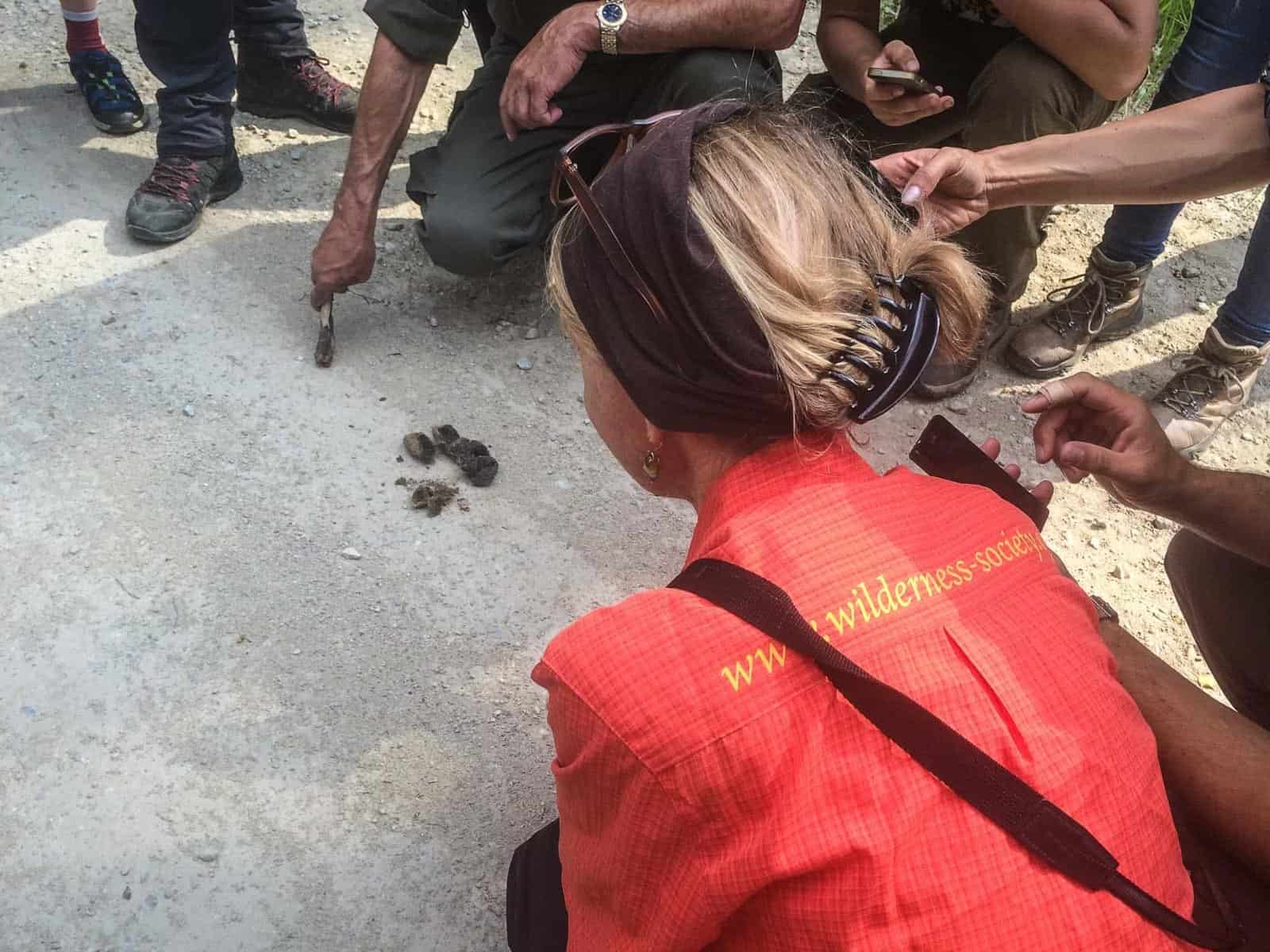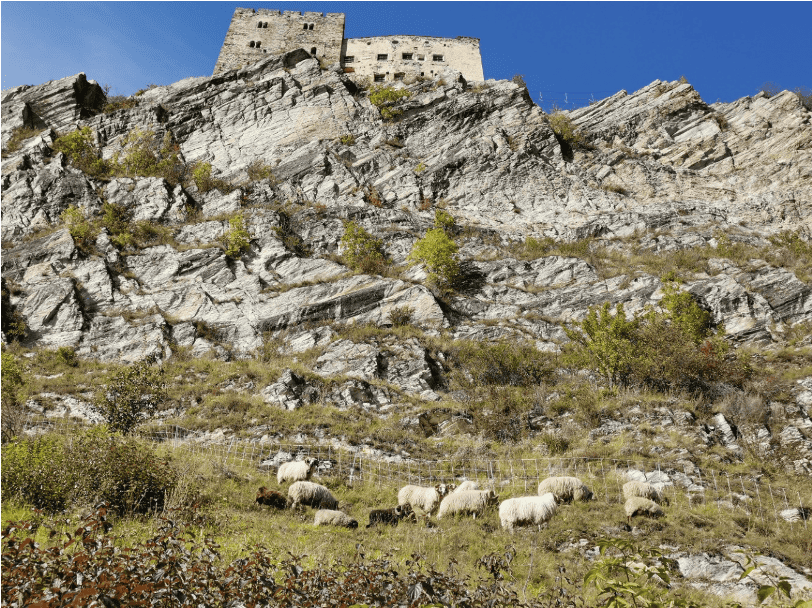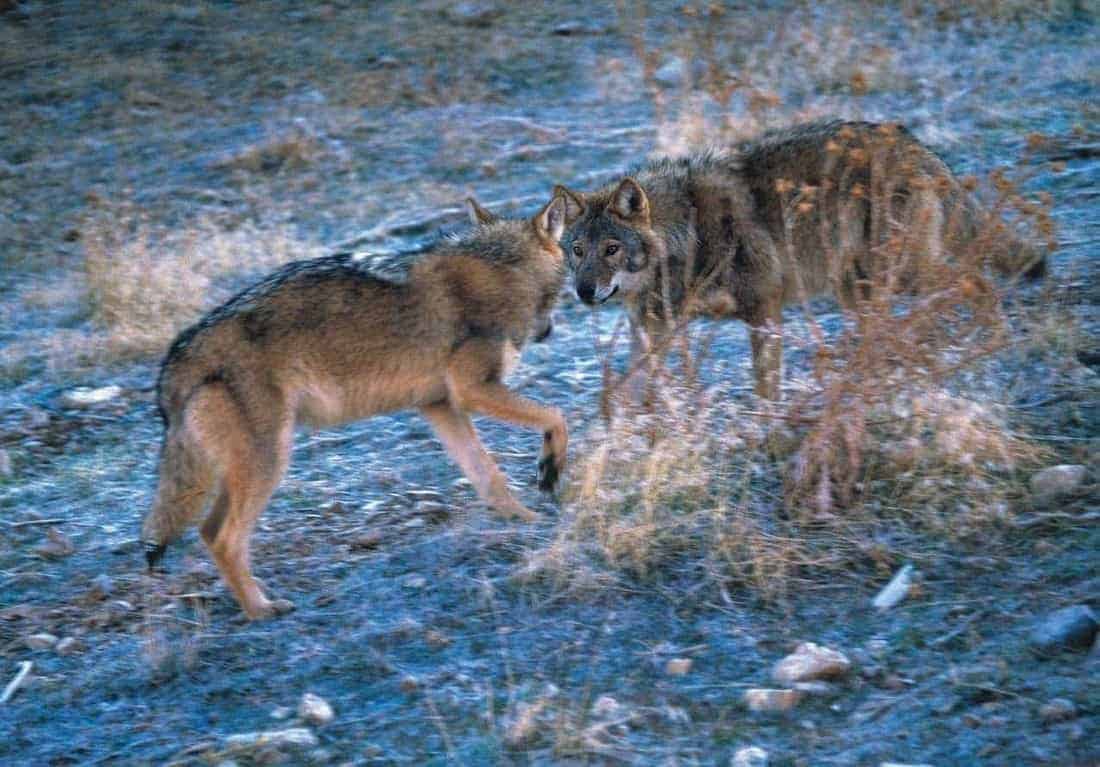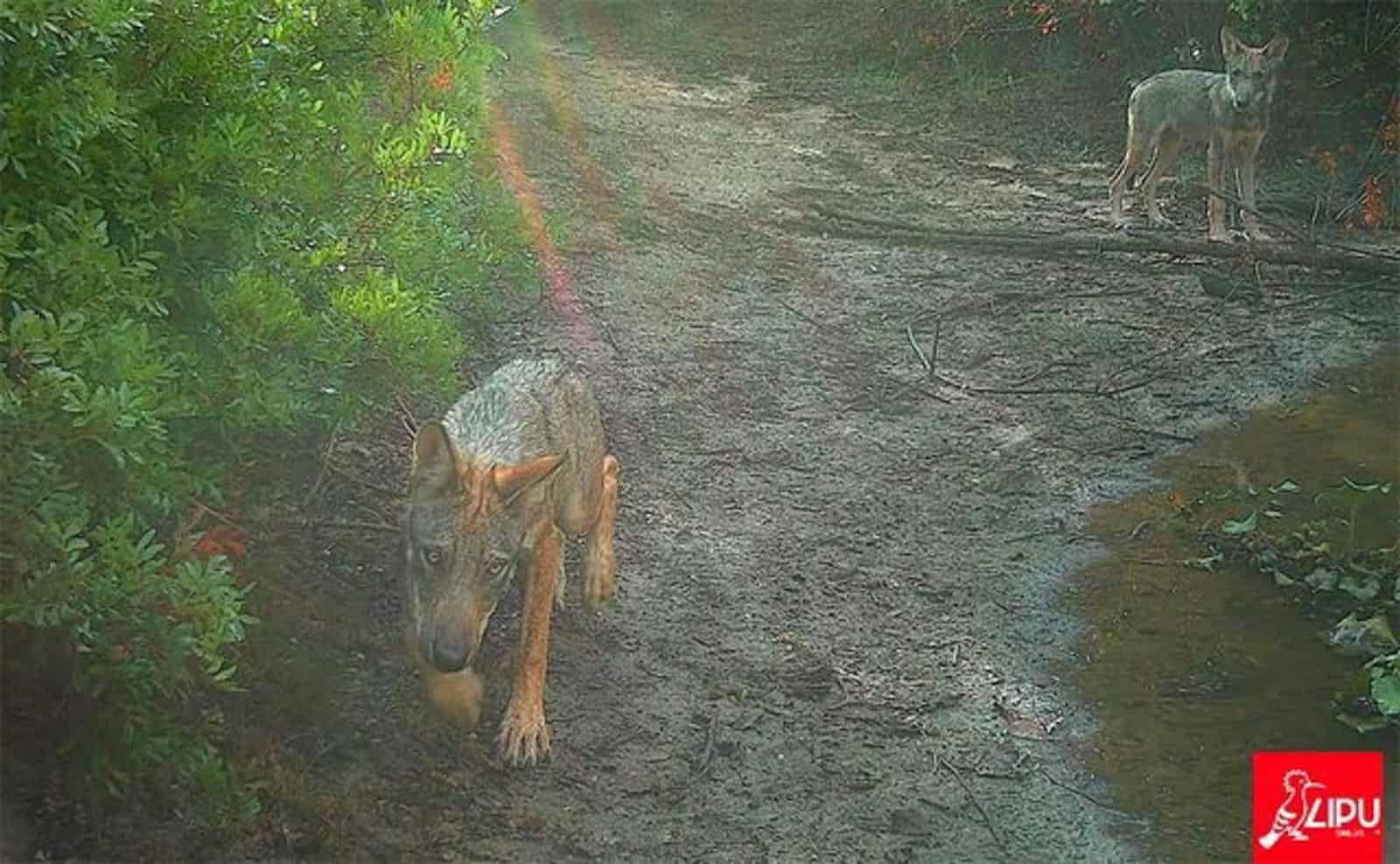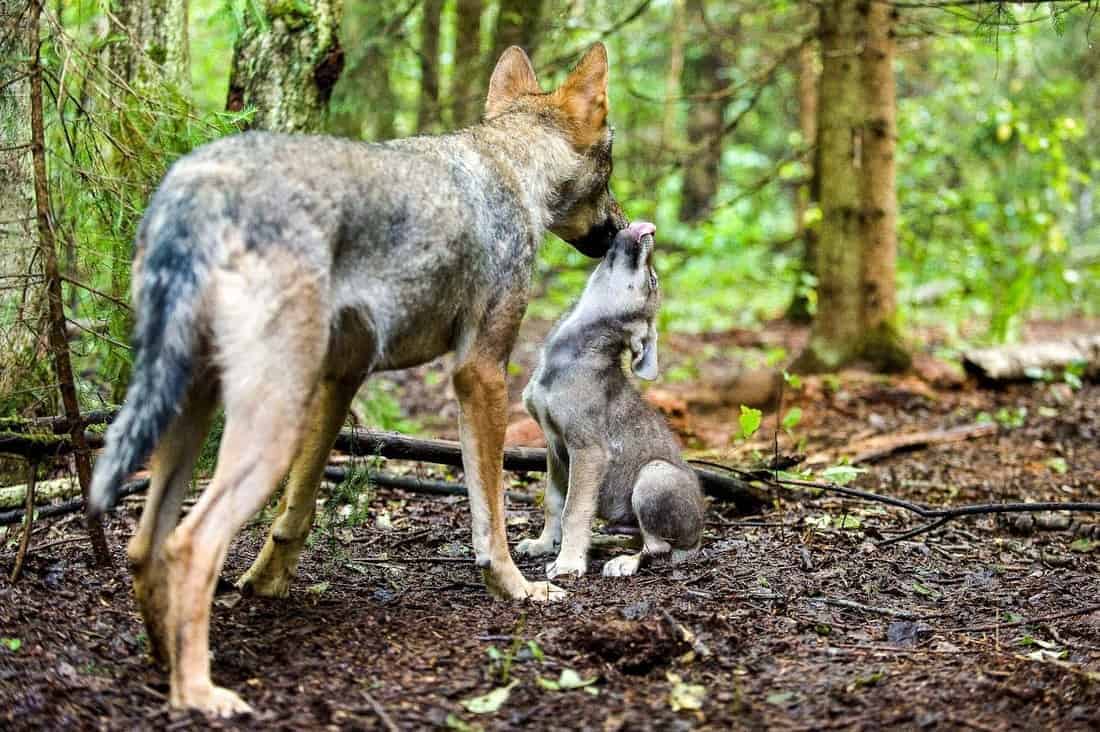LIFEstockProtect: Giving a hand (or 10) to a sheep farmer in Tyrol
For the newly approved project LIFEstockProtect, parts of our team supported by highly motivated volunteers spent almost three weeks in the field, supporting a local farmer in the Tyrol region in Austria. They were supporting him with looking after the sheep for the last weeks of the summer season. And at the end of September, they assisted in herding 200+ sheep from the ‘Alm’, the mountain pastures, down to the valley.
Helping local sheep farmer
They arrived to Tösens, a small vilage in Tyrol, Austria bordering Switzerland on the 10th of September and met with the local farmer Thomas Schranz. Together with other farm animals, he owns 200+ sheep, which graze on alpine pastures 2500m above sea level during summer time. Every day they hiked to the pastures to ensure the sheep´s well-being and check if the electric fence was working. If they found any escaped sheep, they herded them back into the fenced area. In addition, they prepared the return of the sheep down to the valley called ‘Almabtrieb’. It marks the end of summer season and the end of our team’s stay here. Preparations included removal of unused fences and learning herding tricks for the big trip down the mountain.
During their stay in Tirol, our team members were sleeping in a specially built mobile shepherds´ hut. It is a small cabin suitable for 4 people to stay. There are two rooms equipped with bunk beds and a living room with dining table and a wood burner, all on less than 20 m². Our team was testing this cabin before the next season, when the Volunteer Workforce Network of LIFEstockProtect will start and volunteers will help Thomas with his sheep.
Wolves are returning to Austria
The Tyrol region is characterized by steep mountains with alpine pastures, which local farmers are using for livestock farming – sheep, goats and cows. Recently, Tyrol confirmed presence of eight different wolves. Therefore, it is extremely important for local farmers to use effective protection measures to avoid depredation of wolves. These include electric fencing, livestock guarding dogs and the permanent presence of shepherds.
As our newly approved project LIFEstockProtect is focusing on livestock protection and farmer coexistence with the natural wildlife, we are keen to gain hands-on experience on this topic. Every day, our team members in Tösens were learning about the work and needs of sheep farmers. They also had conversations with other stakeholders like local farmers, business men and tourism representatives. They listened to their problems, fears and answered questions about the project. In addition, they tried to learn and exchange about practice examples of the tools that help protect sheep. Most importantly, they supported a nature-oriented local farmer with long needed manpower. It was a great example for other farmers that volunteers can greatly help farmers and that shepherd presence in the pasture is an effective livestock protection measure. This was also the feedback we received from long-established farmers and shepherds, who were impressed by the work of our team.
LIFEstockProtect project
The LIFEstockProtect project, funded by the EU LIFE Programme, has started on the 1st of September 2020. During the course of 5 years, the international project foresees more than 150 activities with over 4 000 participants. This will include workshops, seminars and trainings related to livestock protection and coexistence with wildlife in the German-speaking region of the Alps.
LIFEstockProtect will encourage agricultural organizations and livestock farmers to work closely with livestock protection experts, researchers, environmental organizations, the tourism sector and other stakeholders on livestock protection. The project will focus on Austria, Bavaria (Germany) and South Tyrol (Italy). This Alpine region is witnessing the return of large carnivores, increasing the need for livestock depredation. Consequently, there is a high demand amongst individual farmers for trainings on practical implementation of effective livestock protection measures.


























